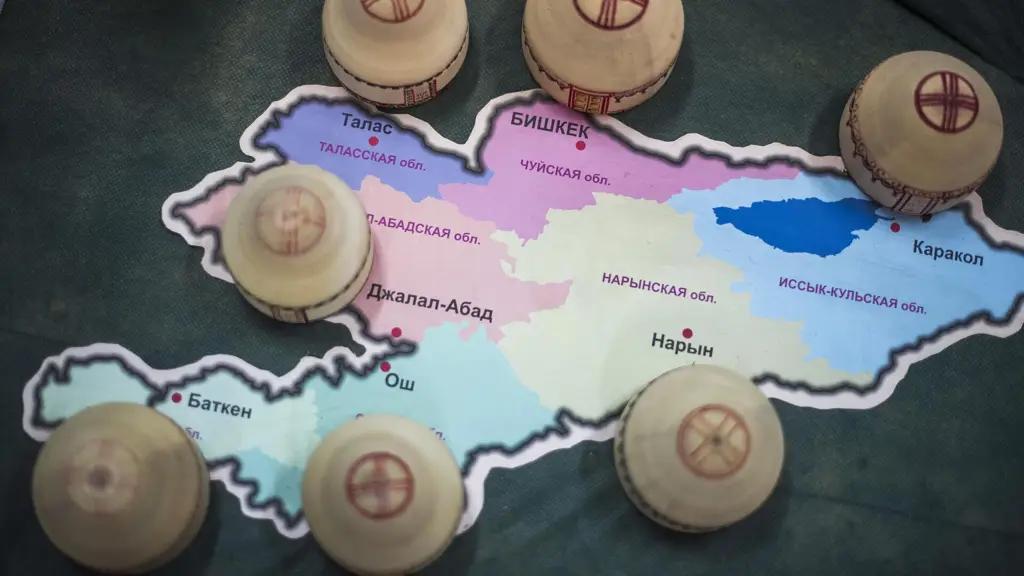
Published
05/23/2025, 16:30The average monthly wage in Kyrgyzstan from January to December 2024 amounted to 429 USD — the lowest among all member states of the Eurasian Economic Union (EAEU). For comparison, this figure exceeds 951 USD in Russia and nearly 731 USD in Armenia. Amid ongoing integration within the EAEU, these figures raise questions about the "labor hierarchy" within the union. Is the relatively low cost of labor compared to partner countries a competitive advantage or a barrier to improving living standards? For now, one thing is clear: in terms of the labor market, the EAEU remains more of a club of shared interests than a truly unified space.
According to official statistics published by the Eurasian Economic Commission, income disparities among member states of the union remain significant. In Kyrgyzstan’s industrial sector, for example, the average wage is around 641 USD — nearly 1.5 times less than in the same sector in Russia (941 USD), and almost 2.3 times less than in Russia’s mining industry (1,683 USD). Even in agriculture, where wages are traditionally lower, Kyrgyz workers earn just 310 USD compared to 688 USD in Russia.
According to economist Iskender Sharsheev, Kyrgyzstan’s inexpensive labor force, compared to other EAEU countries, can be seen as a competitive advantage — especially for attracting investors focused on labor-intensive industries, where low wage costs play a key role.
“This factor makes Kyrgyzstan attractive for setting up garment factories, assembly plants, agro-processing facilities, and outsourcing centers. However, in the long term, this advantage comes with significant limitations as well,” — the economist notes.
As Sharsheev points out, low labor costs are often accompanied by low productivity, weak qualifications, and limited access to modern technologies.
"This does not contribute to the transition to a high-tech economy, but rather keeps the country in the low-value-added segment. Additionally, constant pressure on wage levels can lead to the outflow of skilled labor abroad, reducing the potential for domestic development. Many working-age citizens leave for work in Russia, Kazakhstan and other countries, exacerbating the labor shortage in certain sectors within the country," — he continued.
Thus, according to the expert, although low labor costs may be a short-term competitive advantage, in the strategic long term, Kyrgyzstan needs to focus on modernizing its economy, enhancing workforce qualifications, and transitioning to more complex types of activities.
"Only in this case will the country be able to move beyond the model of cheap labor and ensure sustainable economic growth," — concluded Iskender Sharsheev.
The strong dependence on external labor markets increases the vulnerability of the Kyrgyz economy, making it largely reliant on remittances from migrant workers. According to estimates over the past five years, Kyrgyz expatriates send between 2.4 billion USD and 3 billion USD back home annually. In the past year alone, 2.989 billion USD flowed into the country through fast money transfer systems, with over 93% of these remittances coming from Russia. According to the World Bank, these funds provide income stability for about a third of all households in the Republic.
As for the outflow of the working-age population, over the past five years, an average of 5,884 people have left the country annually, totaling more than 29,400 individuals. However, in the last three years, there has been a steady decline in migration. For instance, while 6,527 people left Kyrgyzstan in 2022, this figure dropped to 3,163 by the end of 2024 — more than a twofold decrease.
The wage gap reflects not only differences in labor costs but also the scale of the economies of the respective countries. In 2024, Kyrgyzstan had a total of 592,600 jobs, of which 99.8% (or 591,300) were filled. In comparison, by the end of last year, Russia had 34.4 million jobs occupied, with an additional 2.7 million remaining vacant. Even Armenia, despite its smaller population, exceeds Kyrgyzstan in the number of jobs, with 770,300 positions available.
Kyrgyzstan's lag is especially noticeable in the industrial sector. Only 82,500 people are employed in this field across the country, including:
For comparison, over 8.2 million people are employed in the industrial sector in Russia, while in Armenia — nearly twice as many as in Kyrgyzstan.
Employment in Kyrgyzstan is heavily concentrated in the public and social sectors. Nearly 35% of all employed individuals work in education — that's 207.9 thousand people, making it the country’s largest employer. The second largest sector is healthcare and social services, employing over 70 thousand people. Government administration, including defense and social security, accounts for another 63.6 thousand jobs. Altogether, these three sectors provide employment for nearly 60% of the country’s entire working population.
Industry lags behind, with 82.5 thousand people employed, making up only 14% of the total number of jobs.
This employment structure indicates a skew towards public and low-productivity sectors, which hinders the development of high-income and innovative industries.
This is partly explained by the current economic model. In Kyrgyzstan, the share of industry, including mining, manufacturing, energy and water supply, constitutes only 16.4% of GDP. In comparison, trade alone accounts for 17.6% of GDP.
Amid the EAEU partners, the picture is even more contrasting. As a result, Kyrgyzstan remains the country with the lowest wages in the EAEU and almost full employment in the formal sector: as of the end of 2024, the country had only 1.3 thousand vacant positions out of 591.3 thousand occupied jobs. At the same time, according to the National Statistical Committee, the working-age population of the country, starting from 15 years old, totals 2.8 million people.
This means that the formal sector of the economy is able to provide employment for just over 21% of the working-age population. The rest are either employed in the informal economy, the size of which is difficult to estimate due to its informal nature, or are forced to seek work abroad.
Thus, the cause of labor migration is not so much the low wage levels as the objective shortage of jobs within the country. In these conditions, it makes sense to view labor resources as a form of "export," at least until the economy can offer a sufficient number of jobs within the country.



